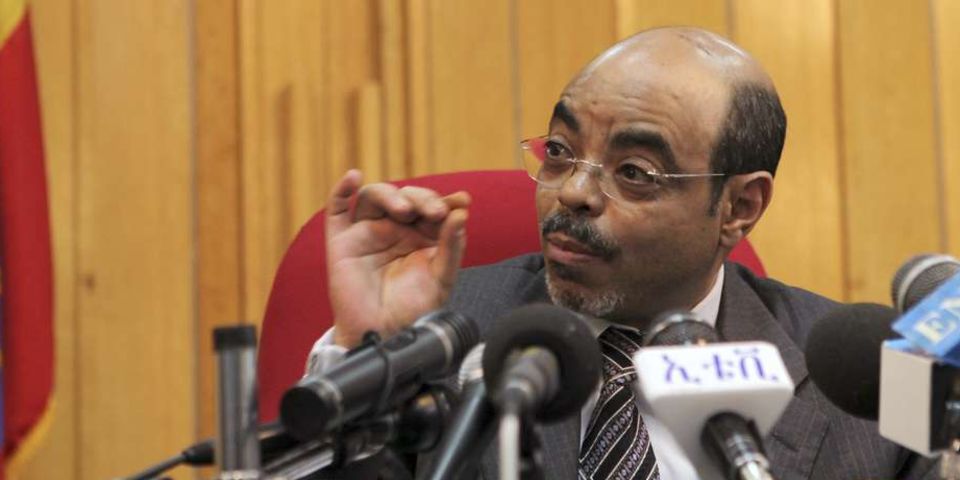From spearheading the struggle against dictatorship to dominating government and then withdrawing from the national stage, the Tigray People’s Liberation Front (TPLF) has shaped Ethiopia’s history for decades.
As Prime Minister Abiy Ahmed’s army wages an offensive against the TPLF leaders in their northern bastion of Tigray, here is a brief history of the group:
The years underground
The TPLF emerged from a feverish and radical student movement, steeped in Marxist-Leninism, which shook an imperial Ethiopia dominated by the ethnic Amhara elite in the 1960s and 70s.
In a country that is home to some 80 different groups, Stalin’s writings on the nature of nationality bringing together people of the same culture, language and territory, inspired several Tigrayan students to form the TPLF in February 1975.
The group “aimed to secure the self-determination of Tigray within the Ethiopian polity.”
Emperor Haile Selassie had been overthrown the previous year and the new military Marxist regime known as the Derg brutally crushed the demands of ethno-nationalists.
The TPLF grew quickly into an efficient and disciplined organisation that would spearhead armed struggle against the Derg.
By the end of the 1980s, help from the powerful Eritrean People’s Liberation Front (EPLF) allowed them to “put the Ethiopian army to rout and gather a lot of equipment,” creating a “snowball effect,” says Roland Marchal, an expert from the Centre for International Research in Paris.
And when different Ethiopian armed groups united under the banner of the Ethiopian People’s Revolutionary Democratic Front (EPRDF), it was TPLF chief Meles Zenawi who became its leader.
The Meles era
On May 28, 1991, wearing EPRDF uniforms, it was TPLF troops backed by Eritrean forces and armoured vehicles who seized control of the capital Addis Ababa.
Aged just 36, Zenawi became Ethiopia’s strongman, remaining at the helm until his death in 2012.
Officially, the EPRDF was in charge. But it was the TPLF who held the reins, even though Tigrayans represent only six percent of the population.
Marchal says Meles was “very deft” in co-opting regional elites, integrating them in the government and “immediately weaving a system of alliances that he controlled.”

It was Meles who created the ethnicity-based federal state which still exists today — an Ethiopia of 10 semi-autonomous regions.
Meles managed to “at once deal with the Ethiopian national question” and create elites in each region who were loyal to the TPLF.
After the 1998-2000 war with Eritrea, Meles purged some dissident voices from the TPLF, effectively governing alone.
Meles’ sudden death in 2012 left the TPLF “weak, sclerotic and extremely corrupt,” said Marchal.
The EPRDF chose Meles’ handpicked successor Halemariam Desalegn to become prime minister.
But he lacked the historical legitimacy of the armed struggle, was not Tigrayan and had no control over the military and security apparatus in the hands of the TPLF.
Despite Ethiopia’s rapid economic growth, nearly 30 years of Tigrayan domination, characterised by the lack of freedoms and rampant corruption, fueled frustration notably among the two largest ethnic groups, the Oromo and Amhara.
In 2015 a plan to extend the capital into Oromo land drove protests by both groups, creating a movement which led to the resignation of Hailemariam in February 2018.
Disgrace
The EPRDF chose Abiy, an Oromo, to replace him, cementing the loss of influence for the TPLF.
“When Abiy took power… his obsession was to set aside the TPLF, because he knew their influence” both in government and in the intelligence and security services, said Marchal.
The TPLF was sidelined from key posts, several leaders arrested for corruption, while some sought by authorities retreated to hide in the Tigray region.
When Abiy decided to scrap the EPRDF in favour of a single political party, the TPLF refused to join and fully retreated to Tigray, defying the authority of the central government.
The party held its own elections in September despite polls being postponed nationwide due to the coronavirus pandemic.
Conflict
Abiy launched the military operation after claiming the TPLF had attacked two federal military camps, which they deny.
According to the International Crisis Group (ICG) the TPLF has a paramilitary force of some 250,000 fighters, but also potentially weaponry taken from federal military bases in the region.
By firing rockets at two airports in the neighbouring Amhara region and the Eritrean capital, it has shown its military might.
Ethiopia’s military expertise rests largely in the hands of Tigrayans, said Marchal.
Credit: Source link